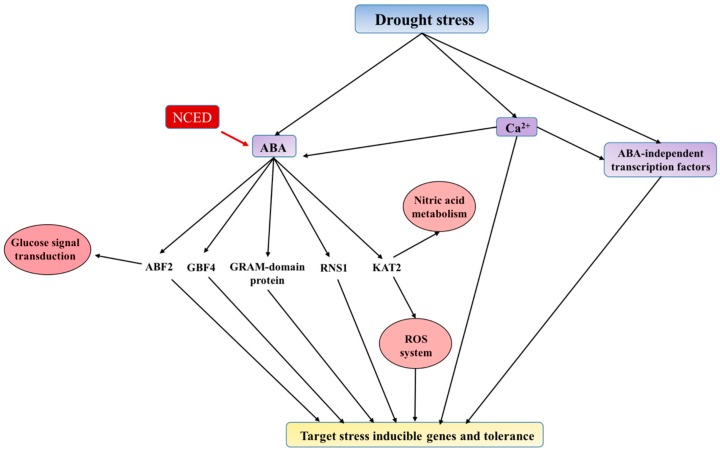Figure 2.
Schematic of the drought-induced signaling pathway based on proteome changes in switchgrass leaves. The biosynthesis of abscisic acid (ABA) was increased due to the elevated level of 9-cis-epoxycarotenoid dioxygenases (NCED) protein in drought-treated leaves. The elevated ABA level concurs with the induction of several ABA-responsive transcription factors, such as ABF2 (ABA-responsive elements-binding factor 2), GBF4 (G-box binding factor 4), GRAM, and ABA-responsive proteins including RNS (secreted ribonuclease) and KAT2 (3-ketoacyl-CoA thiolase-2). The ABA-independent signal transduction pathway appears to also play a role in drought-induced molecular regulation in switchgrass leaves. Several signal transduction processes may involve a second messenger (Ca2+).

